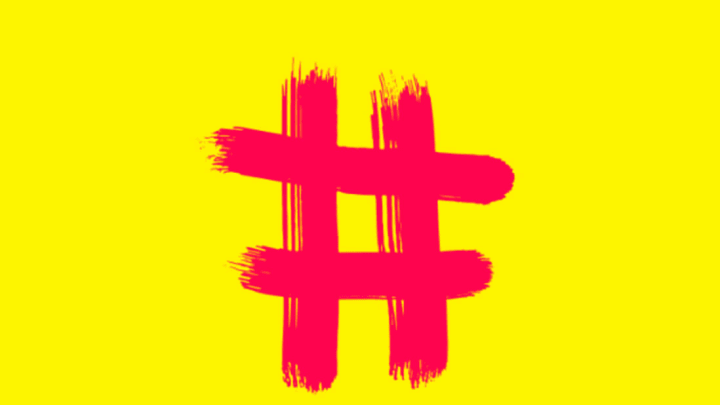There are Two Kinds of Hashtags—Which One Do You Use Most?

How is language evolving on the Internet? In this series on internet linguistics, Gretchen McCulloch breaks down the latest innovations in online communication.
What's the point of a hashtag? Most reference works say that it's something like "a word or phrase preceded by a hash or pound sign (#) and used to identify messages on a specific topic." And that's certainly what you'll find if you look at Twitter's trending topics, from the frivolous like #FakeDogFacts to the political like #BlackLivesMatter to the utilitarian like #followfriday.
But what about posts like the following? Does anyone really expect to see a bad 8th-grade glasses photo under #swag? Is #cantstopcrying going to help people looking for Les Mis reviews?
My first pair of glasses, too! From the "$30 and Under" rack. #nofilter #swag https://t.co/u2zBiyZHMd
— Kory Stamper (@KoryStamper) August 21, 2015
So i have never watched Les Miserables untill now....??? #cantstopcrying #AMAZING #OMG #BRILLIANT @lesmisofficial
— Tonia Mct (@tmct75) August 23, 2015
Of course not. Linguist Allison Shapp did a study of over 10,000 randomly-selected tweets and found that hashtags on Twitter come in two categories. Index hashtags are our first kind, the organizational hashtags you typically think of. Shapp found that they often contain links and were more likely to be favorited and retweeted—which makes sense, since they often refer to a real-world event. The second kind of hashtags are commentary hashtags, a social kind of hashtag that's more likely to contain other people's usernames.
Shapp also found that if a tweet contained multiple hashtags, they were more likely to be indexes (which tend to be shorter), and that index hashtags were also more likely to be integrated into the rest of the tweet, whereas commentary tended to occur at the end. And the more often someone tweeted, the more likely they were to use more commentary hashtags, although surprisingly the really frequent tweeters didn't use quite as many commentary hashtags as we'd expect.
One common style of index hashtagging, which Shapp called the "context template," looks like this:
Out of context statement in prose #context #context
For example:
Crazy in Love #beyonce #superbowl #halftime
Shapp's analysis is of Twitter, but it's easily applicable to other social networking sites that use hashtags. And since Instagram and Tumblr don't have such a short character limit, people there often use both index and commentary tags at the same time.
In this instagram post, for example, #CaturdayNiteDerpOff is an index tag (because the internet is amazing) but #JustHereForTheDerps and #GonnaGetDownAndDerpy are clearly commentary.
What about when people use "hashtag ___" in speech? Well, it's not going to help people search through the airwaves to find a particular spoken utterance, so spoken "hashtags" are near-universally the commentary kind. I didn't follow people around with a voice recorder to get examples, but there's an even cooler way to demonstrate it. If you search for the word hashtag itself on twitter, you find a number of people using it without any hash mark at all to clarify that they really want you to interpret their hashtagging as commentary.
Not every hashtag falls neatly into one category or the other: index and commentary hashtags are more like two ends of a hashtag continuum. Somewhere in between is the #marketing hashtag, where #brands #hashtag #random #words that are #topical but which no one is probably searching for. And Shapp points out that hashtags sometimes start as one-off commentary hashtags but get picked up by a larger group of people and become indexes, making them difficult to classify. One common example of hashtags on this boundary are meme hashtags, such as the "problems" set—#FirstWorldProblems and #90sProblems are indexes, but people also coin one-off "X problems" hashtags as commentary on any problem characteristic of a particular group.
You could call those #hashtagproblems.